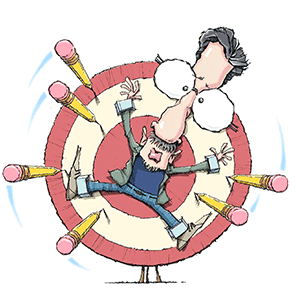Are school shootings surging after COVID pandemic? Data shows massive shift across US
Published in News & Features
With stay-at-home orders in place and students learning from home, school shootings dropped in 2020 during the COVID-19 pandemic. However, when children went back to school, the rate of school shootings were not consistent with pre-pandemic levels, data show.
Instead, school shootings more than doubled, data from the K-12 School Shooting Database by data scientist and creator David Riedman shows.
On Dec. 16, a 15-year-old opened fire at Abundant Life Christian School in Madison, Wisconsin, police said. A teacher, student and the accused shooter were killed, and six others were injured, officials said.
In addition to that shooting, there have been 144 school shootings in 2024 as of Dec. 18, according to the data. This is a slight decrease from the previous year, but the number remains on the staggering upward trend in gun violence within school since 2020.
Between 2021 and 2024, there have been over 100 shootings annually in U.S. schools, the data show. Between 2014 and 2020, there were fewer than 50 each year.
McClatchy News’ findings from the data exclude shootings that did not happen during school hours, off of school property or on school buses, accidental shootings where no one was injured or killed, and suicides. The visualization reflects school shootings that happened during school hours that likely targeted or injured people.
Why do school shootings keep happening?
The staggering surge is on the minds of experts looking to answer the question, “why do school shootings keep happening?”
There is no one definitive answer, experts told McClatchy News. However, there are a few contributing factors.
“Guns are readily accessible, and we seem to be shifting towards fewer restrictions and imparting responsibility to parents who make guns available,” Will Pelfrey, a professor and researcher that focuses on criminal justice at Virginia Commonwealth University, said in a phone interview with McClatchy News.
He added that mental health also plays a role in gun violence in schools, but that’s not always the case.
“The (shooting) usually has some precipitating event. It’s either some grievance or some concern or some stressor or something that’s happened in that person’s life that has culminated in this act,” Marc Zimmerman, director of the Youth Violence Prevention Center at the University of Michigan, told McClatchy News.
The solution, according to experts, is not as simple as increasing security in schools.
“Schools have to cultivate an environment where students can produce alerts or provide information about other students where they have concerns, and some schools have done that through anonymous reporting apps, and that’s a great system,” Pelfrey said.
One early prevention method backed by some experts is behavioral threat assessments, an early detection system that aims to prevent violence in schools before an act is carried out.
“Part of this early detection is just detecting early signs of what might be the beginnings of a bubbling up to what would be the horrific act,” Zimmerman said.
Early signs, according to Zimmerman, include when a child is suddenly disconnected from their friends and surroundings or look up violence online.
“Most of them have sort of planned it out, or have some idea about where they’re going to get a gun, how they’re going to do it, where they’re going to walk in,” he said.
The assessment, according to Zimmerman, could help connect the child with resources such as mental health support before they carry out a violent act.
Pelfrey adds that a cultural shift away from violence is needed to decrease the number of school shootings.
“The United States has a culture of violence that doesn’t exist in a lot of other places,” he said. “We glorify violent people and sometimes make heroes out of people who really shouldn’t be, and we often resort to violence as our primary way of resolving disputes, as opposed to looking for mediation approaches.”
Pelfrey said there needs to be policies implemented at a federal level to help school shootings decrease.
“I think (school shootings are) going to continue to rise,“ he said. “There have been no steps taken to reduce the proliferation of firearms. There have been very few steps taken to cultivate a ‘see something, say something’ approach within schools.”
_____
©2024 The Charlotte Observer. Visit charlotteobserver.com. Distributed by Tribune Content Agency, LLC.







Comments